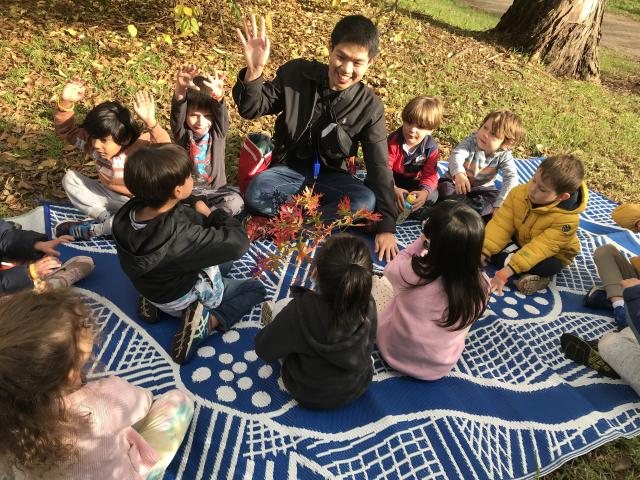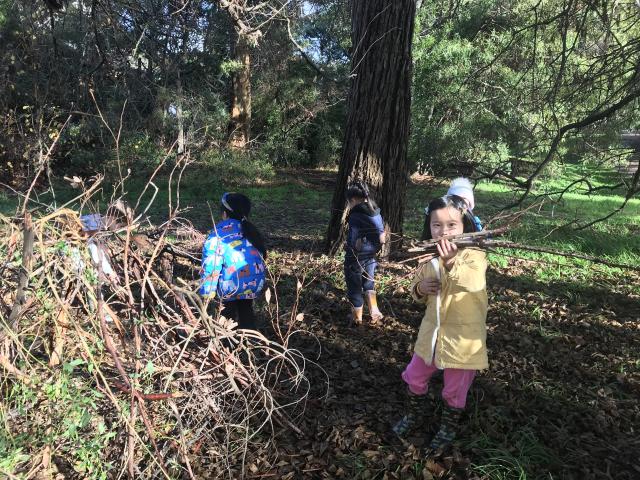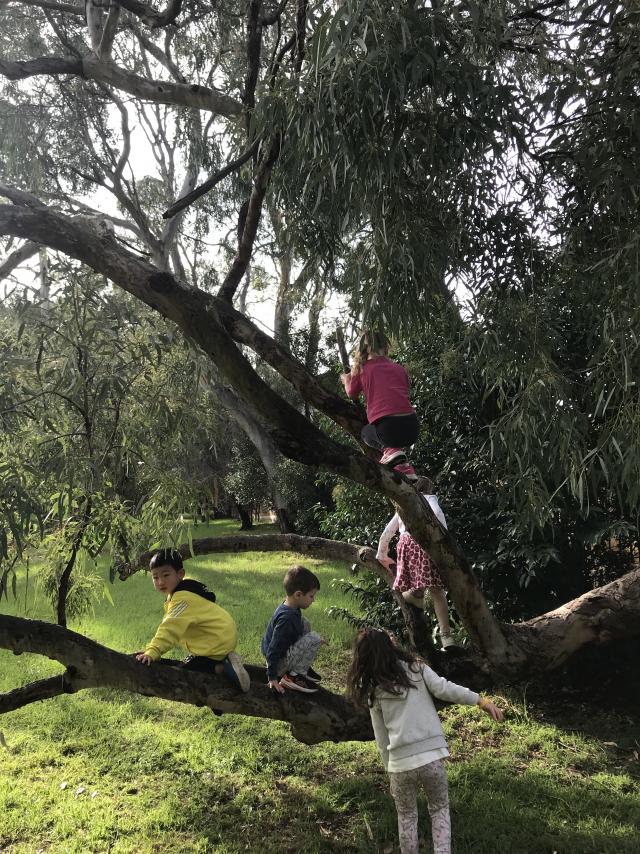A group of kindergarten kids are climbing and sitting on a tree, hanging onto a branch.
Some of their classmates are jumping in puddles, splashing muddy water all over themselves.
Others are squatting to look at insects, and some are collecting sticks and piling them up to make a ‘bonfire’.
The children are bringing items to their educators, asking questions about what they’ve discovered.
“How can you tell if this is a stick or a branch?” asks one.
Another asks: “Why are the birds being so loud? What are they saying?”
The questions come thick and fast.
“Why are there so many bugs living under the big rocks and wood? What are those bugs called?”
Kindergarten teacher Darren Halim says this is a typical scene during the weekly nature play program at Highgate Early Learning Centre in Ashburton.
The answers and advice ring out, too.
“Don’t touch the mushrooms, we don’t know if they are poisonous or not, just look at them from here,” the kids hear, and, “I know not to climb on the branches that are smaller than my arms, because it can break and I can fall and hurt myself.”
Mr Halim explains that forest school or nature play programs derived from European countries, such as the Scandinavian nations, in the 1950s.
“Children learn to assess different kinds of risks, learn about safety precautions, explore, discover, and investigate the different flora and fauna they see, create deeply imaginative play, friendship bonds and much, much more,” he says.
And the benefits don’t stop with the children.
“Educators can have better understanding of children’s skills, interest and build stronger relationships,” Mr Halim says.
“Not limited to only actively supervising children, our teaching team believes in adopting a ‘co-investigator’ and ‘co-player’ role, where we investigate and guide children to find the answers to their questions.
“Teachers also need to know when to ‘jump in’ and help guide the learning, but also when to ‘stand back’ and allow children to discover and drive their own learning.
“The teaching supports children to take and manage risks.
“As children gain more exposure and experience outside, they begin to transfer their past learning to new situations and develop their own risk management in looking after themselves.”
Mr Halim says children are more likely to be hurt falling out of bed than falling from a tree.
“Children possess an intuitive ability to make their own risk assessment as children will only climb up as high as they are comfortable,” he says.
“Children are also more likely to climb up as high as they are prepared to fall.”











